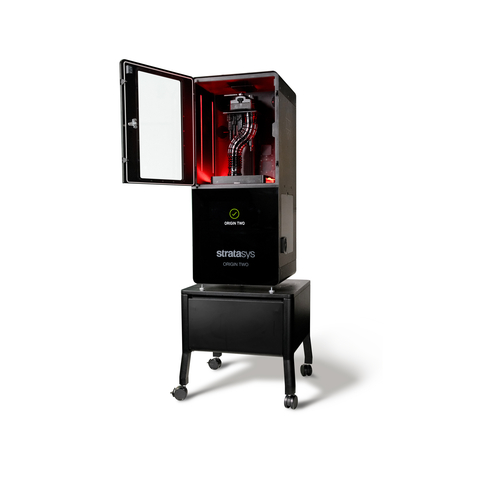OEM 3D printer manufacturer Stratasys launches the Origin® Two DLP Printer with its post-processing system Origin Cure™. The 3D printer can provide precision and consistency, making manufacturers achieve injection-molding quality for short production runs.
Just like the latest Stratasys Origin 3D printer boasts an accuracy of +/- 50 µm; the new 3D printer would achieve the same – especially for applications across connectors, aerospace, and automotive sectors. The surface finish is on par with other conventional methods.
For applications such as seals and gaskets, housings, and window parts, Stratasys explains the 3D printer’s heated chamber can handle materials with a Heat Deflection Temperature (HDT) of up to 300°C. It can also run on a 385 nm wavelength to support a broad portfolio of materials, ranging from high-temperature resins to high-viscosity formulations.
Rani Hagag, Chief Healthcare and Consumer Business Officer, Stratasys says, “Additive manufacturing has grown to be a critical component of production at any scale on the manufacturing floor. With the new Origin® solution, manufacturers in need of low volume, high precision parts now have an alternative to mass production that can meet their most stringent requirements, something impossible with additive before.”
This Origin 3D printer addresses the key factors by enabling manufacturers to:
- Ensure that end parts accomplish desired properties by maintaining robust quality controls.
- Bring production in-house to eliminate the reliance on 3rd parties.
- Enhance inventory management & reduce warehousing pricing with on-demand delivery of spare devices.
- Streamline part manufacturing into a single workflow with improved consistency.
This will reduce reliance on third parties, and improve inventory management. More than 93% repeatability is achieved through this system. Thus, the consistency across the manufacturing runs remains intact.
“Additive manufacturing is becoming increasingly valuable for low production volumes in the manufacturing sector. Manufacturers use 3D printing for low-volume and custom parts, which helps reduce lead times and waste. This allows for greater flexibility and cost efficiency, supporting prototyping and on-demand production. As a result, additive manufacturing is a practical solution for companies looking to adapt quickly to market needs and reduce inventory costs,” says Ryan Martin, Senior Research Director from ABI Research.
Origin Two and Origin Cure are now commercially available.
Author: Nagarjun M
Remember, you can post free-of-charge job opportunities in the AM Industry on 3D ADEPT Media or look for a job via our job board. Make sure to follow us on our social networks and subscribe to our weekly newsletter: Facebook, Twitter, LinkedIn & Instagram! If you want to be featured in the next issue of our digital magazine or if you hear a story that needs to be heard, make sure to send it to contact@3dadept.com.






